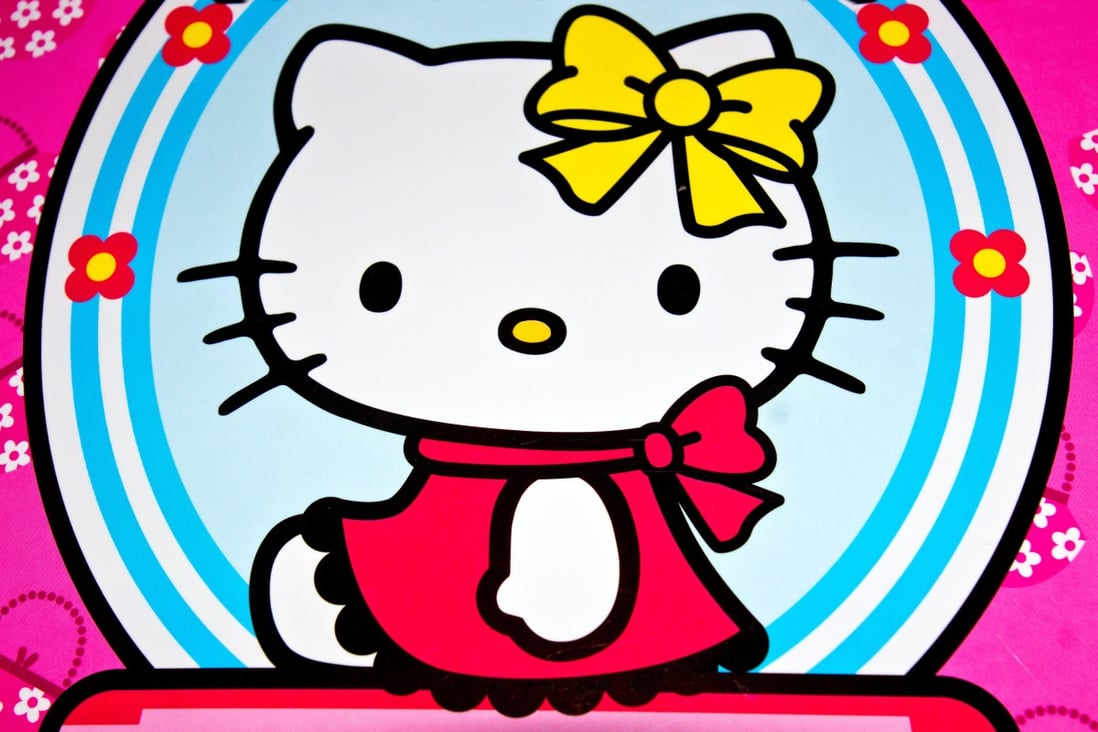
The postman who delivers to Lucy Fowler is bemused – and amused – at the sheer amount of mail bearing exotic foreign stamps that she receives virtually every day of the week. Sometimes the package is small and only contains a pen or a key ring, Fowler says, but on other days the postman has to ring the doorbell as the parcel is too big to fit through the letterbox. A rolled-up rug. A kettle. A full set of tea cups and saucers. Pillows.
Everything that the postman brings has one thing in common. They all bear the simple outline of a cat with button eyes, a yellow nose and a pink bow in her hair.
Since making her debut on November 1, 1974, Hello Kitty has become a phenomenon around the world – the poster kitten for uber-cute – and earned a fortune for Tokyo-based Sanrio.
To Fowler, she is irresistible. “I first saw Hello Kitty when I was around 19 years old, when my younger sister and I got a clock for our shared room,” she recalls. “There is a 10-year age gap between us so our tastes were very different, but as soon as we saw it we both knew that we wanted the clock with Hello Kitty sitting in a big cup with a lemon slice.”

“Since then, my love for everything about Hello Kitty has just grown,” says 36-year-old Fowler, a full-time carer for her mother who lives in Britain, in the Yorkshire city of Hull.
In the past few months, her long-suffering postman has delivered a Hello Kitty handbag and a tote bag, a purse, a mirror and comb set, two Kitty soft toys wearing T-shirts bearing the red cross of St George, two cat-shaped tins, pillows and a seat belt protector. And Fowler doesn’t even drive.
How Yamaha went from a watchmaker to a world beater
Her most prized acquisition is a recent arrival, a large water dispenser. “What better way is there to keep hydrated than getting your water from a big, cute cat?” she asks. “It is really handy and keeps us healthy at the same time, so I have persuaded my mum to have it in her kitchen.”
There is a vast amount of Hello Kitty merchandise out there and Fowler buys most of her items online. Her next aim is to fit out the rest of her kitchen in Hello Kitty equipment.
And while she has never been able to travel to Japan, Fowler says she would “buy everything that I saw.”

“I really do see Kitty as being Japanese and also perhaps a symbol of unity, that a simple cat’s face can be featured on anything and everything and help to bring people together,” she says.
That attitude would be music to the ears of Shintaro Tsuji, the founder of the company and its president and CEO until he stepped down – at the remarkable age of 92 – in 2020.
In a message on the company’s website, Tsuji writes that when the company was set up in 1960, just 15 years after the end of World War II, it was still an “era of stark practicality”.

“However, we at Sanrio were convinced that regardless of this social current, people would nonetheless find joy and hope in beautiful, fanciful things, such as the blooming of a flower or a bird’s cheerful song.
“Thus our characters were born, with a presence and value that has since far surpassed the confines of a printed design,” he adds. “They delight, they express people’s sentiments, they foster friendships, they put smiles on faces.”

At the outset, however, the company was focused on a far more traditional Japanese product.
With capital of a million yen – a sizeable amount at the time – Tsuji set up Yamanashi Silk on August 10, 1960, but soon expanded beyond silk items to everyday practical items, such as rubber sandals.
To make his products stand out from the competition, he started adding simple designs of flowers then characters to the sandals – noting that these sold far more quickly than the unadorned products. He hired a team of artists to come up with cute characters and shifted into mass production.

The move away from silk products was completed in 1973, when the company became Sanrio.
The company’s first merchandise lines were designed for gift-giving occasions for children, such as birthdays, with Hello Kitty and her twin sister, Mimi, added to the line-up on November 1, 1974.
Created by Yuko Shimizu, the character is a perpetual third grade student who lives with her feline family in the suburbs of London. Her lack of a mouth was a conscious design choice to enable fans to project whatever emotion they are feeling at that moment onto the character, making her constantly relatable.

Kitty was an instant success in the domestic market, with the vinyl purse a must-have for girls immediately after it was introduced in March 1975. Hello Kitty crossed the Pacific to the US in 1976 and then to the rest of the world. By the turn of the century, it was one of the most instantly recognised media franchises of all time, worth an estimated US$8 billion a year when she turned 40 years old in 2014.
The Kitty name has not been able to completely avoid controversy, however, with Mercis BV filing a lawsuit in 2010 on behalf of Dick Bruna, the Dutch creator of the Miffy rabbit character, which first appeared in 1953. The suit claimed that a rabbit named Cathy that appeared alongside Kitty in some of the stories infringed on the Miffy copyright. A Dutch court ruled against Sanrio and ordered the company to halt sales of Cathy products in Belgium, Luxembourg and the Netherlands. The settlement was extended worldwide in June 2011.
Hello Kitty has, nevertheless, consistently been the biggest contributor to Sanrio’s sales – although she has been ably assisted by a plethora of similarly cute and cuddly critters, ranging from Tuxedo Sam to Chococat, Cinnamaroll, Sugarbunnies, My Melody and Jewelpet. The company is constantly working on new characters and rotating them into its active line-up.

Recognised with the “Top Brand with a Conscience” by the Medinge Group of Sweden in 2003 for its communications principles, Sanrio has also partnered with Unicef since 1984.
Since the turn of the century, and the growth of online and electronic entertainment for children, the company has expanded into the online and games sector, while still turning out a remarkable array of branded products, from stationery to school supplies, gifts, clothing and accessories, many of which are sold through dedicated stores.
Sanrio has expanded into publishing, manga and producing animated television series and feature-length movies starring many of its best-known characters.

It is still looking to expand its portfolio and obtained the licence to produce Peanuts merchandise for the Japanese market before snapping up the Mr Men and Little Miss characters in December 2011 for an unspecified amount.
“We have been able to purchase this very valuable character brand, and although this is a new area for Sanrio, we know this is a classic book asset that will have a positive effect on our business,” said Kevin Inoue, senior manager in Sanrio’s Management Strategy Division, in an interview at the time of the deal, adding that the acquisition would provide a “new foothold” for the company in the UK.
Shintaro Tsuji stepped down from the day-to-day running of the company last year to take on the role of chairman, handing over to his then 31-year-old grandson, Tomokuni Tsuji – with the media making much of the fact that the new president is significantly younger than the cute cat that the firm’s reputation is built on.
The new president has some challenges ahead, with Sanrio’s revenue dropping for six successive years to 2020. Shops around the world have been hit by the coronavirus pandemic and the company’s two theme parks in Japan – Sanrio Puroland in west Tokyo (which is closed until May 11) and Harmony Land in Oita Prefecture in southern Japan – are seeing fewer visitors.
Still, fans of Hello Kitty will be relieved to hear that Hollywood is pushing ahead with the first live-action/animation hybrid movie featuring the feline.







